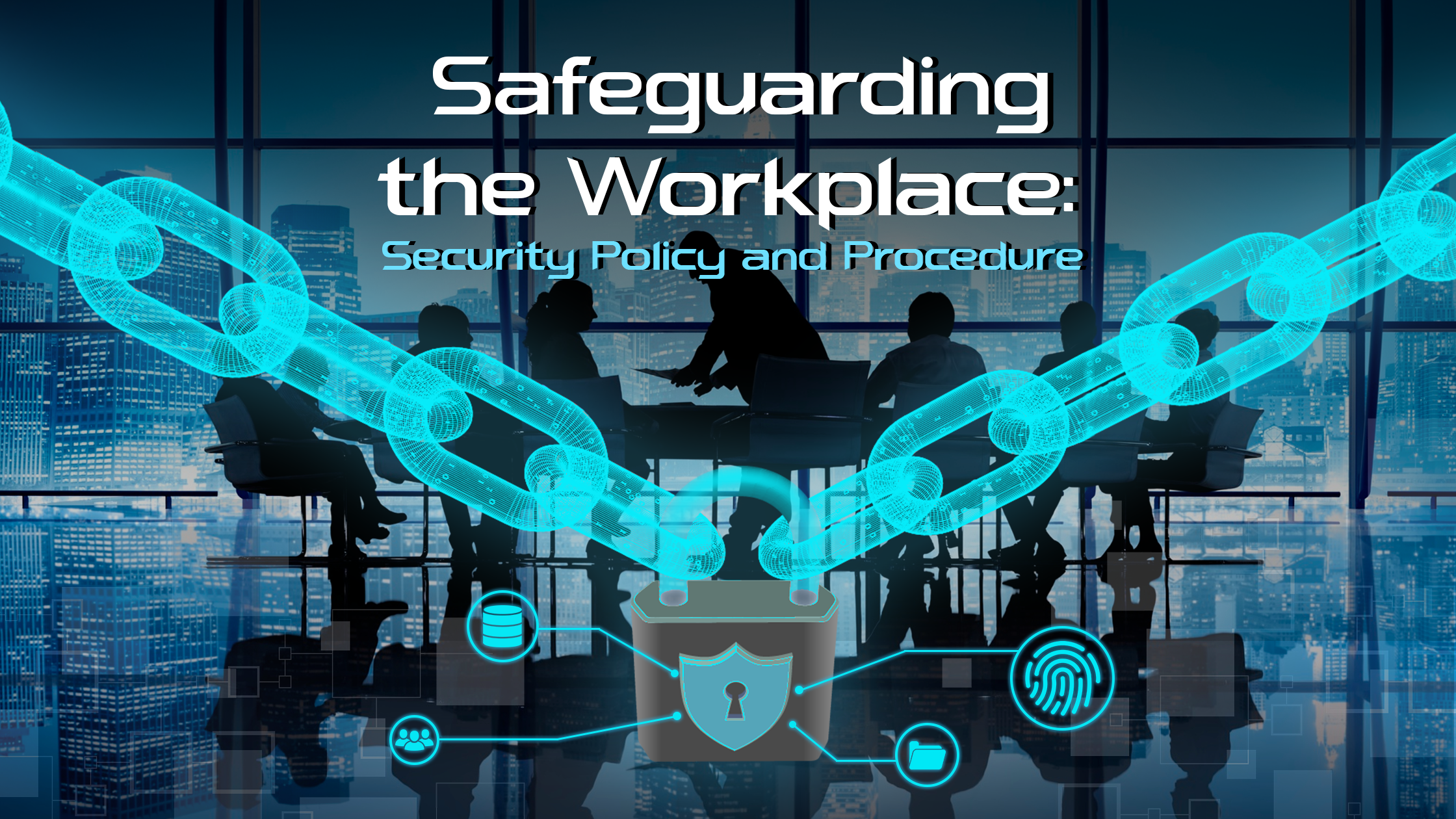Safeguarding the Workplace: Security Policy and Procedure

Establishing an effective security policy and procedure is a primary concern now that offices have reopened. Your workplace is busier than ever because there are more employees around. Increased security risks, both from within and beyond your organization, come with increased foot traffic.
If today’s workplace and security leaders want to safeguard their staff, company, and data, you must ensure your security policy is top-notch. This includes security policies that apply to the office, including ID screening. Additional covert dangers, such as cybersecurity, are also included.
In this article, we will further explore the importance of having security policies and procedures for the workplace, how to develop security policies and procedures for the workplace, and workplace security policies and procedures types.
Security Policies And Procedures Importance
Policies establish the ideal that all organizational activities should strive for, even though they may not directly fix problems and may even worsen them if they are not stated clearly and followed.
By definition, security policy refers to specific, comprehensive, and well-defined policies, guidelines, and procedures that regulate who has access to a company’s computer system and the data stored on it. A compelling policy safeguards data and systems, specific workers, and the entire organization. Additionally, it makes a strong statement about the organization’s dedication to security for the public.
Developing Security Policies And Procedures For The Workplace
Developing the most excellent workplace safety policy possible and one tailored to your needs, there are measures and best practices to adhere to while you do your work.
- Make a security audit. This will show you where your present security measures have holes or flaws. Choose a team to perform this exam, and then provide a score. It might be a member of the internal security team or an outside auditor.
- Identify the scope of your security policy. Understand the coverage that your policy should provide and abide by it. For instance, are you designing policies for cloud-based data security or concentrating on the actual workplace?
- Create a clear written security policy. Your policy should be simple to understand. Use terminology and a structure that makes it easy for others to understand your final approach. When it is finished, store it where people can readily find it.
- Regularly update your company security policies. Security is continuous. Threats to your place of business are constantly evolving and becoming more complex. Your security policy and procedures should be updated at least once yearly.
Types Of Workplace Security Policies And Procedures
Each company will have a unique workplace security policy addressing various issues. This may depend on the organization’s size, location, or sector. Here are a few typical security issues that your company policy should cover.
- Workplace Security
The first line of protection for employee safety is usually your physical security. The security of your actual workplace locations is crucial to it. Everything from access control to ID checking to alarms and surveillance should be covered. It should also include any tangible assets you have at the office, visitor and staff tracking systems, and fire protection. This applies to workstations, displays, computers, and other items.
- Cybersecurity
Your cybersecurity policy safeguards you from compromising crucial corporate data for your company. This includes information on various hardware, networks, and the cloud.
Your policy’s security features will also aid in keeping out trespassers and potential hackers. Backups, encryption, and two-factor authentication are all excellent safety practices businesses should implement.
- Infrastructure Security
To ensure company continuity, your infrastructure security policy is essential. Additionally, it aids in defending your company from outside dangers and service interruptions.
Cloud security should be protected along with data storage and cloud-based business operations and technologies. Web application firewalls (WAF), virtual private networks (VPN), application programming interface security (API), intrusion prevention systems (IPS), and wireless security should all be covered by your infrastructure policy.
- Crisis Management
Your crisis management security plan should prepare and safeguard staff members against unanticipated catastrophes. This can be a disaster recovery strategy in a natural disaster. It might also be a plan for responding to an attack in an emergency.
Plans for company continuity should be part of your policy in case of an unanticipated emergency. This could involve working from home or taking a leave of absence without notice after an emergency.
Conclusion
Your workplace security policy and procedure, when appropriately implemented, will aid in defending your company from both internal and external threats. It will give your employees the knowledge and support they need to handle situations appropriately without endangering themselves or others.
When you partner with CipherEx to help you with your company’s security policies and procedures, we will make sure to help you with the following:
- Defining your security goals based on your business needs.
- Assessing the safety level of your assets.
- Identifying, refining, and establishing new policies.
- Working with your security and IT teams to develop a plan to activate new approaches.
If you have any queries about our services and how we can help your company, contact us, and we’ll gladly cater to any concerns you may have.





Add Your Comment